“Japanese chefs believe our soul goes into our knives once we start using them. You wouldn’t put your soul in a dishwasher!” ~Masaharu Morimoto
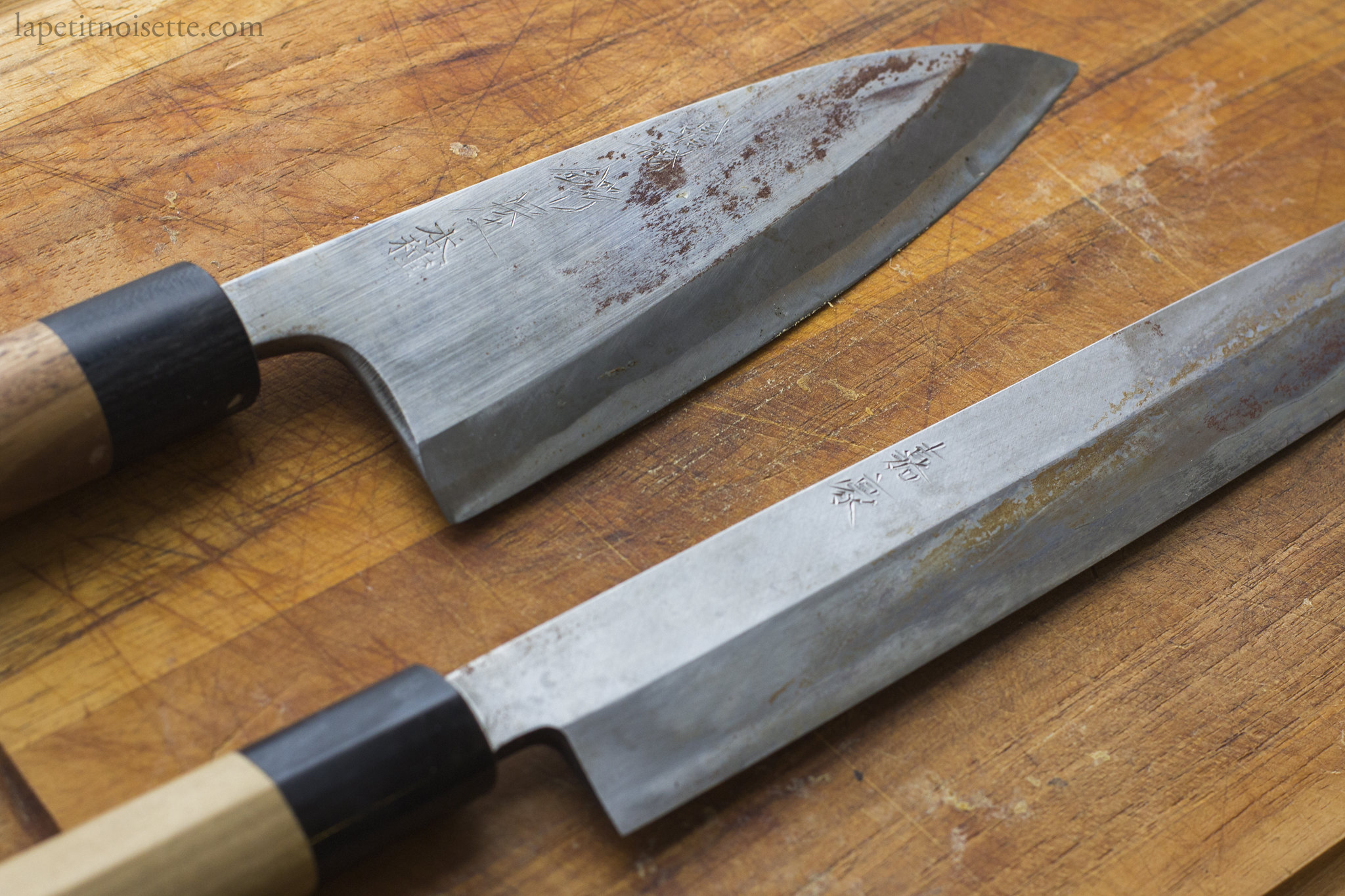
This article is part of a series on Edomae sushi.
Compared to the kitchens I’ve worked in around Europe, what struck me in Japan was how much emphasis was places on sharpening and caring for our knives. We would sharpening them at least once a day, many times even more than that. It was of course not a full course of sharpening, but more of a quick hone on a high grit stone just to maintain tip top sharpness.
The knives we used at the restaurant were typically traditional Japanese knives, which is to say they were made from high carbon steel and not stainless steel or Damascus steel. Whilst this mean’t they were incomparably sharp, it also mean’t that they rusted extremely easily.
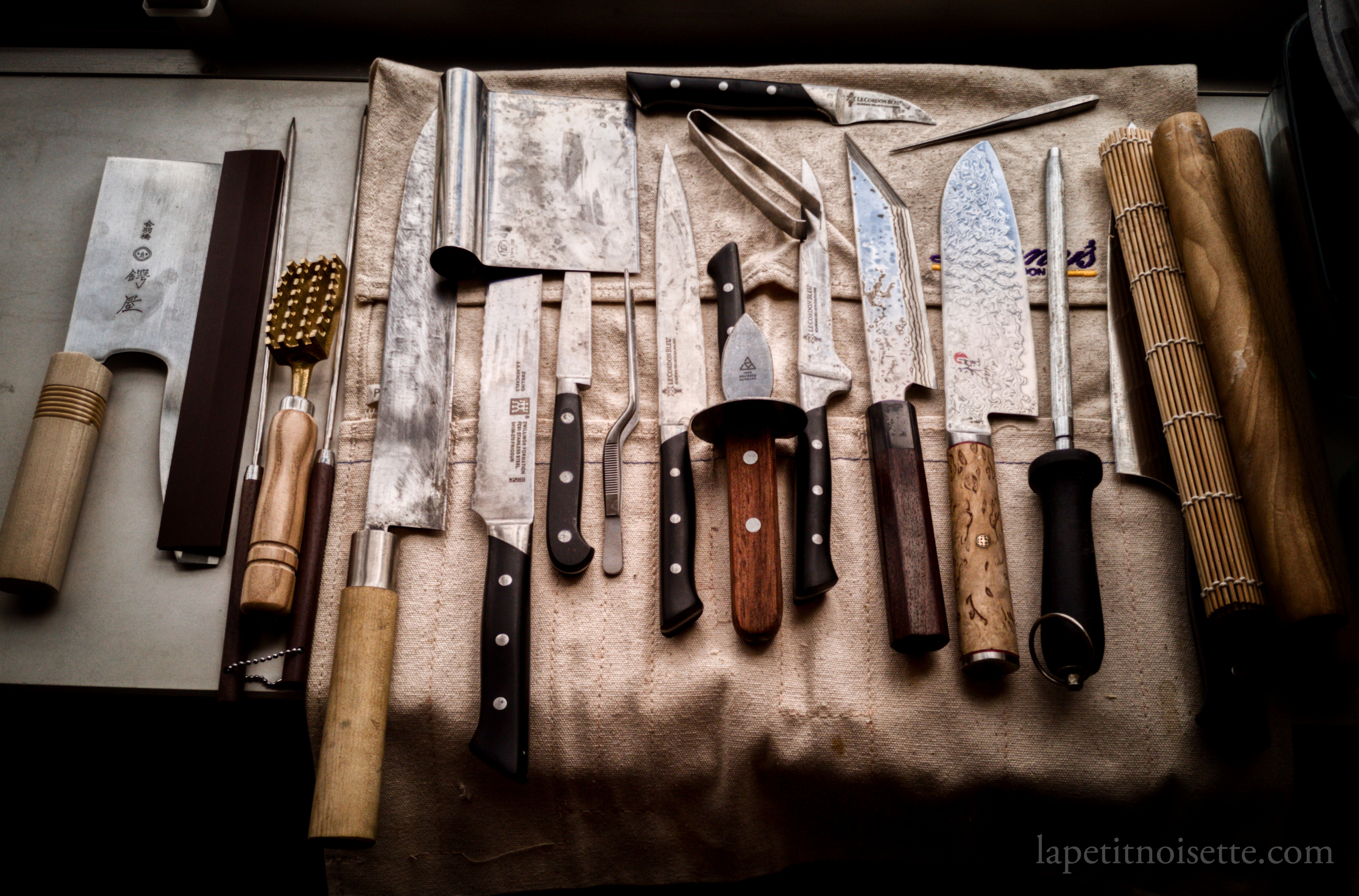
From a house kitchen point of view, they were extremely impractical, having to sharpen your knives so often would just be frustrating, plus the extra care needed to prevent them from rusting would chase away anyone but the most enthusiastic home chefs. In a traditional Japanese restaurant however, there was a sort of romance surrounding them. As the knives, aged and patina-ed over time, they start to tell a story of their past, of every chef that had stepped through the kitchen and trained there.
In terms of general everyday care, we always made sure our knives were kept dry before storing them. They were either stored lying flat or attached to a magnetic strip, never in a knife block. This is because a knife block has no ventilation and are usually damp, which causes the knife to rust. Our restaurant had no dishwasher, but please do not put your carbon steel knives in the dishwasher as they are fragile and can easily crack.
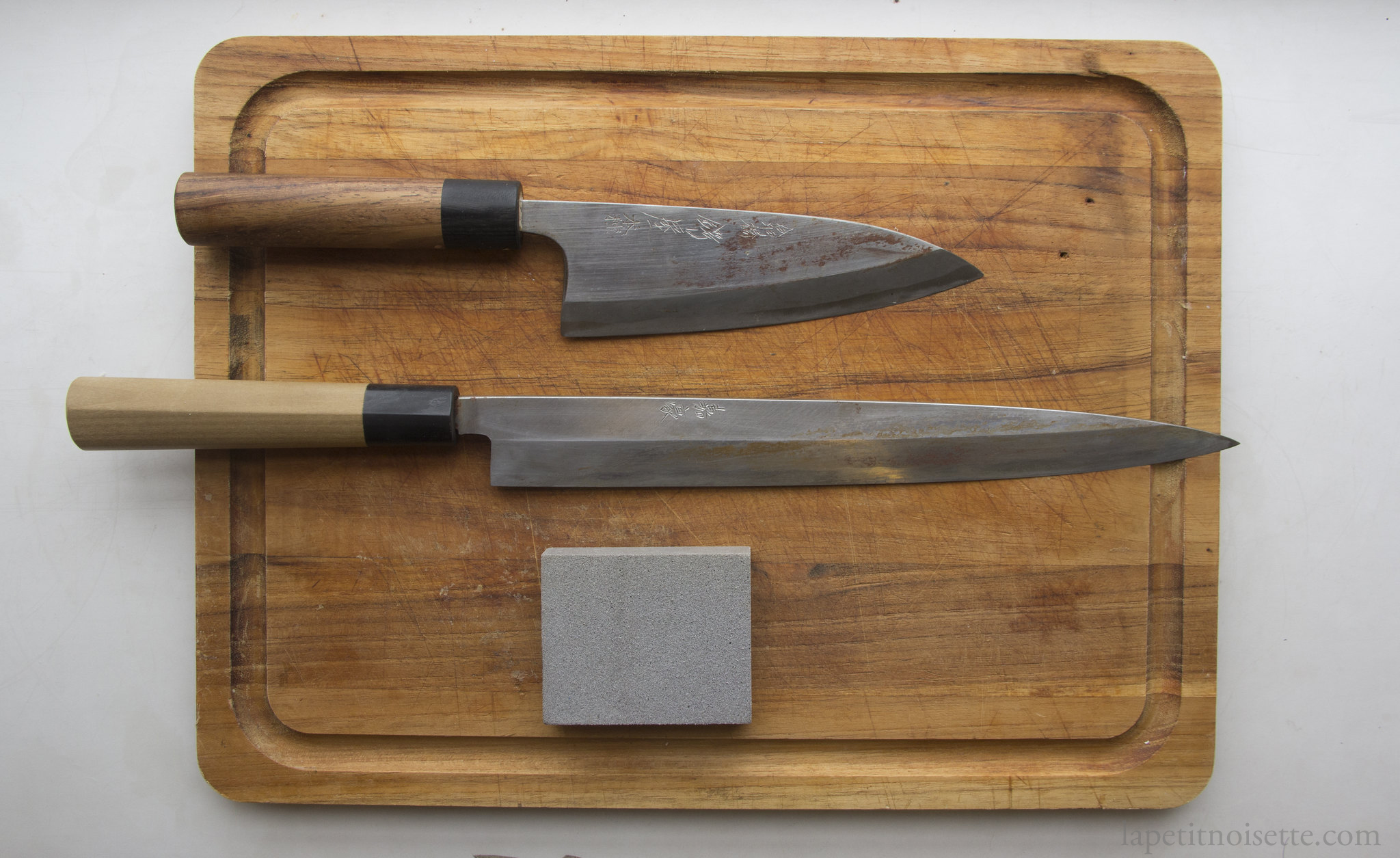
Patina, which is the forming of a layer of coating on your knife though natural ageing and exposure to air is greatly encourage. It not only improves the aesthetic of the knives, but helps protect them from rust. Patina forms naturally after using your knife for long periods of time with appropriate care. However, it is possible to force a patina on a knife by rubbing it with a mild acid such a vinegar or lemon juice. Just add some to your knife, rub your knife down, the polish it and dry it. In our restaurant, we tended to use the cut heads of daikons/radishes to rub the knife when small signs of rusts started to appear. However, if rusting is more serious, we used a Japanese Sabitoru stone (錆びとる) to rub away the rust. This same stone was used to clean any oxidation and tarnishing on the rice bucket and wasabi grater everyday.
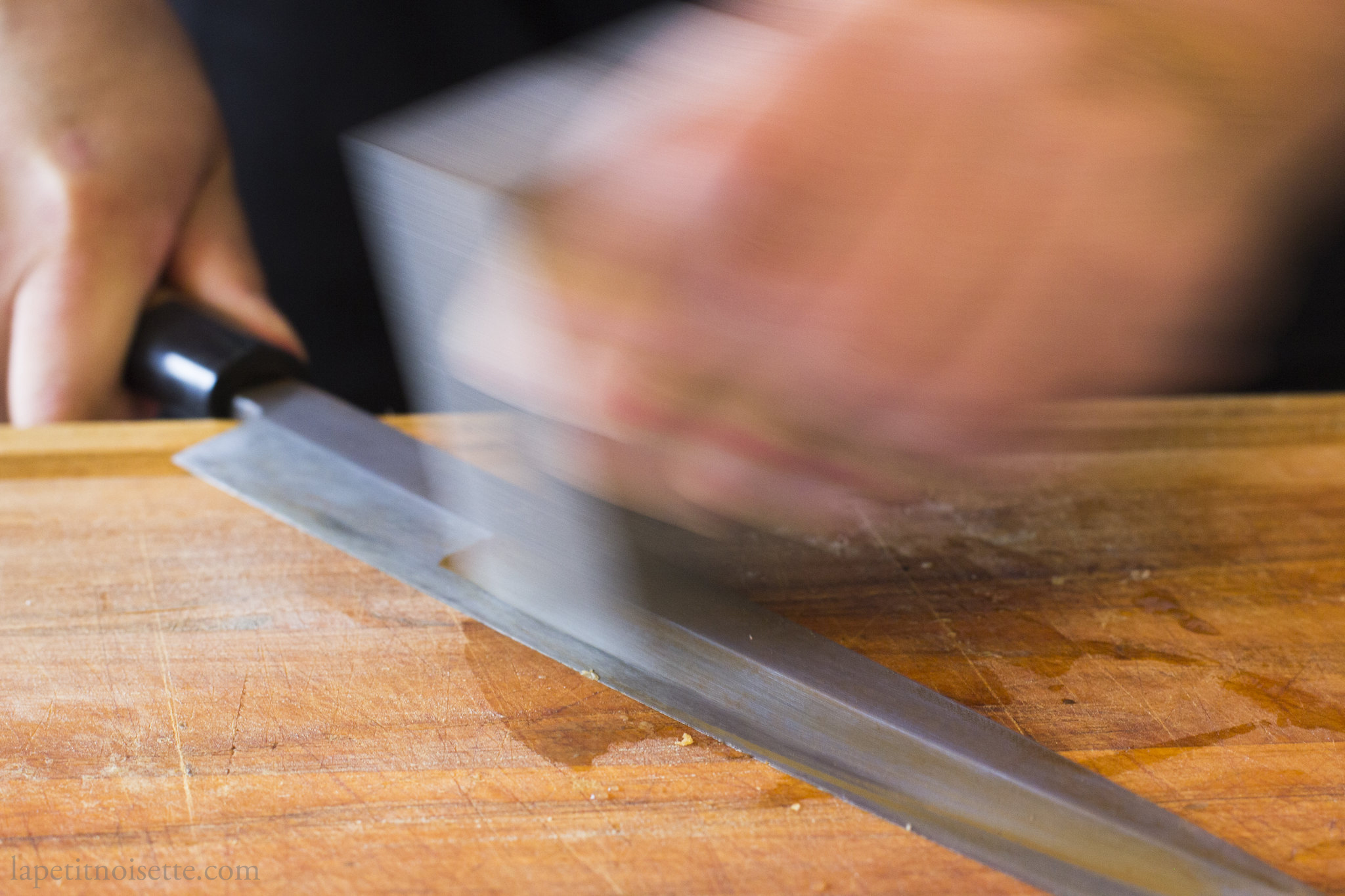
In short, to care for your knives:
- Dry them before storing them
- Never put them in a dishwasher
- always wipe you knife if you’re going to stop using them for a couple of minutes
- Hone your knife as often as possible
- Remove any traces of rust before using your knives
When I started working at the restaurant, I used my own Yanagiba knife or Yanagiba-bocho (柳刃包丁) made from Aogami super blue steel, the traditional long single beveled sushi knife. It required honing everyday and also rust removal after long breaks.
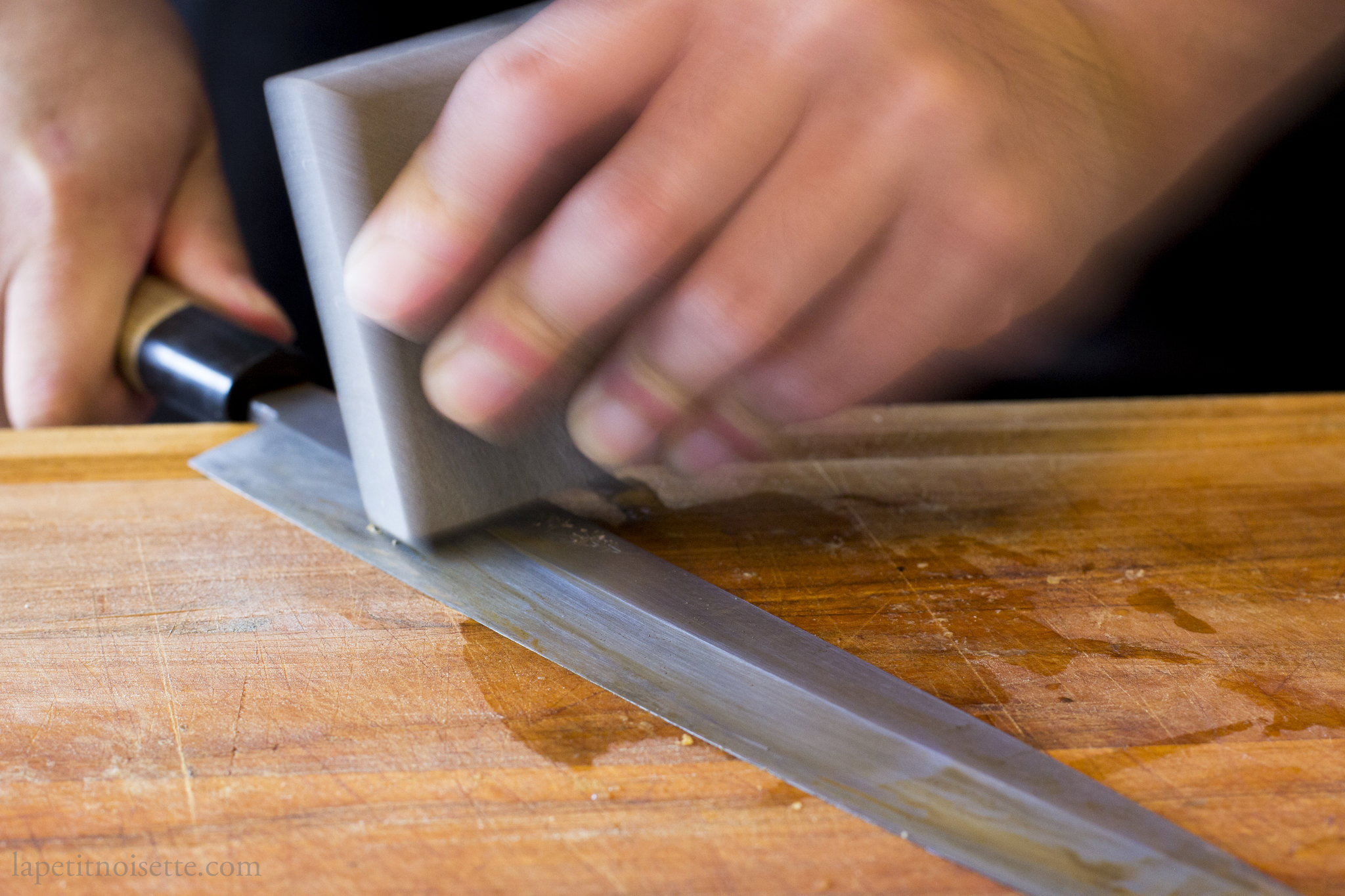
First, wet the Sabitoru stone under running water for a few seconds. It does not need to soak in water. When removing the rust off the knife using a Sabitoru stone, remember to hold the knife down flat and make sure it’s stable. DO NOT applying uneven pressure on the knife as it can crack easily from uneven pressure. Use your thumb to secure the knife as shown below.
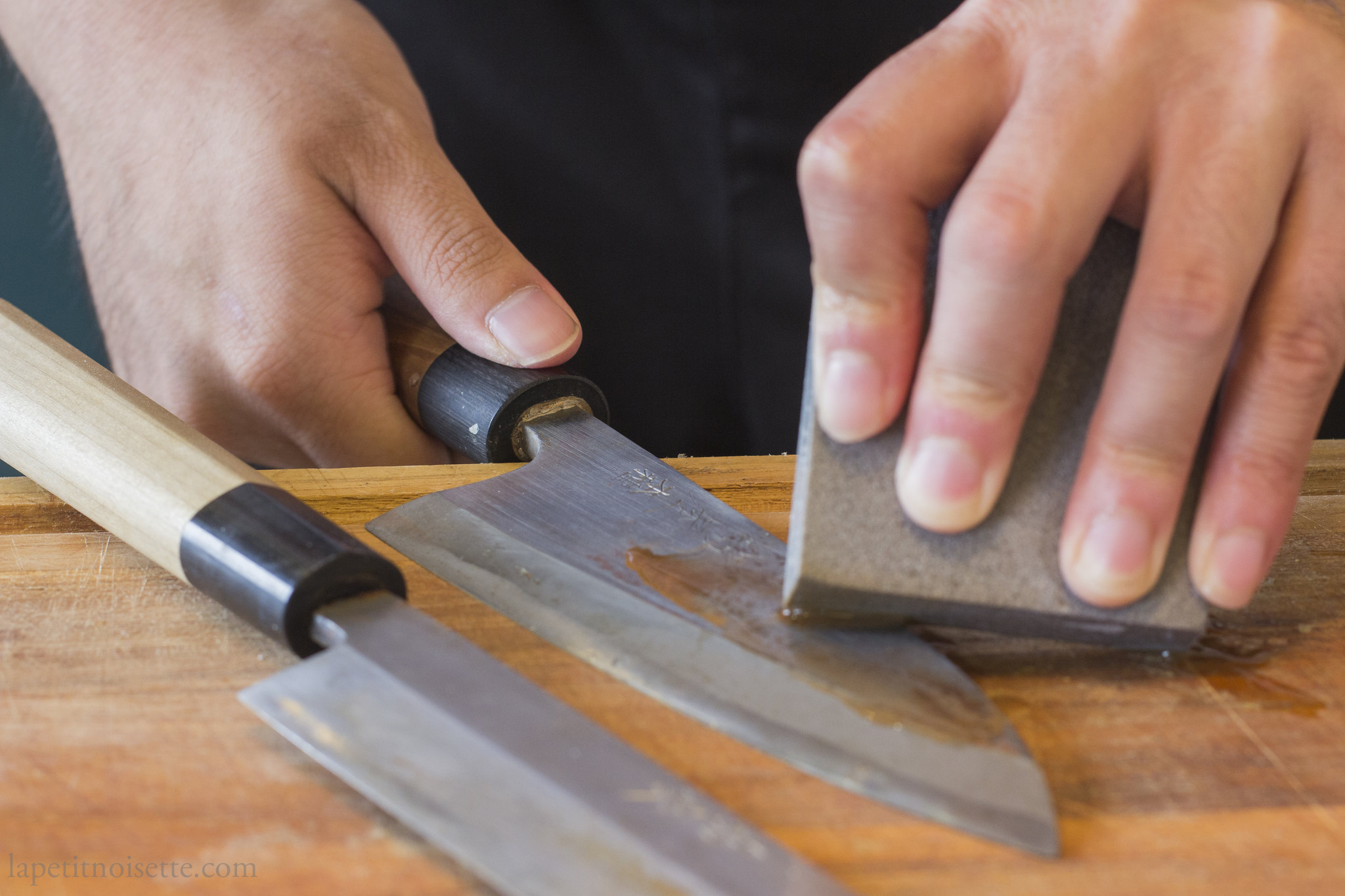
Repeat the sliding motion up and down until all visible rust spots are removed.
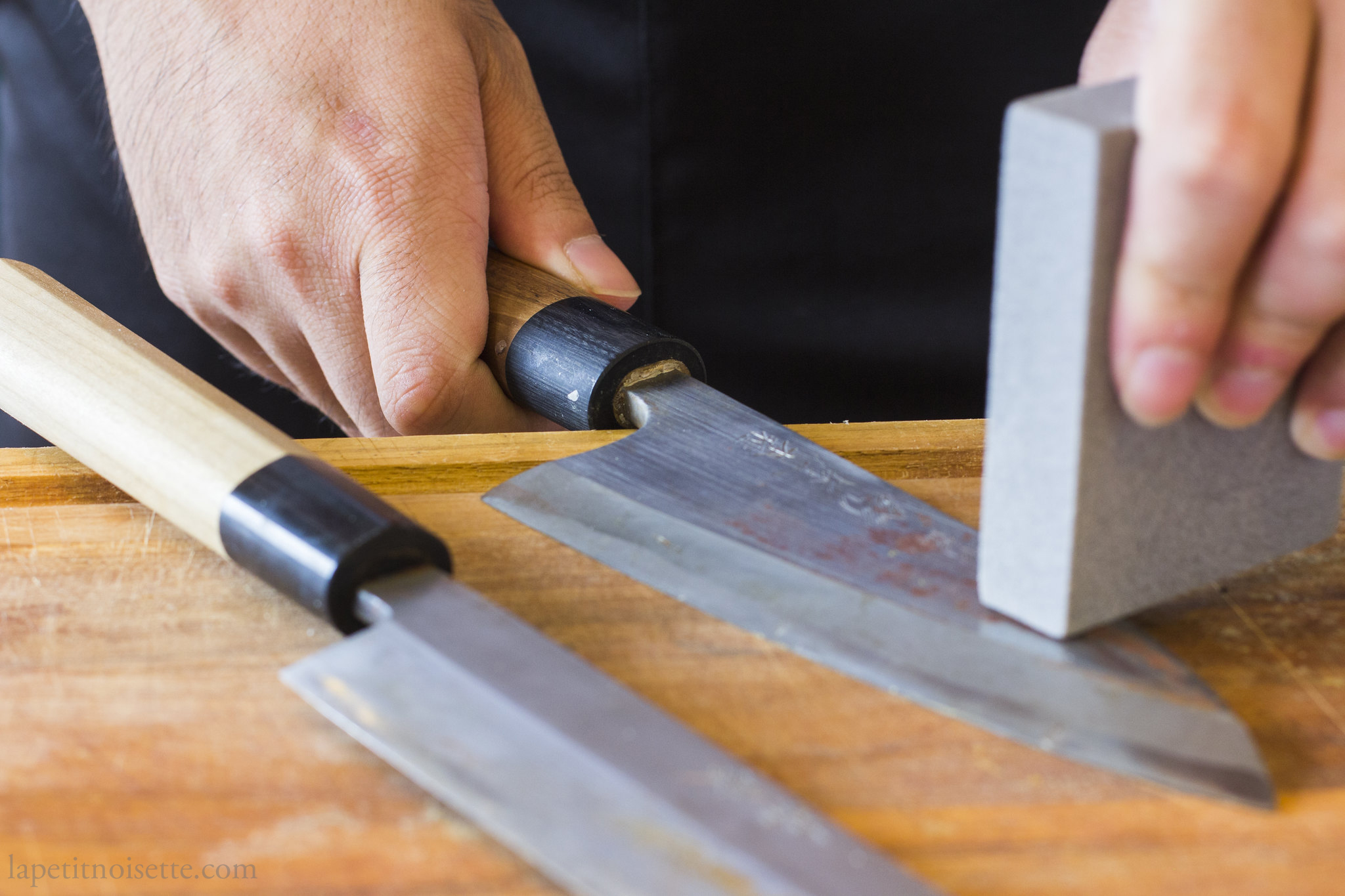
Yes, a relationship exists between carbon steel blades and their user, and it requires attention to detail.